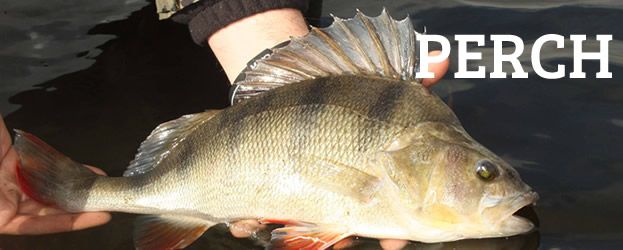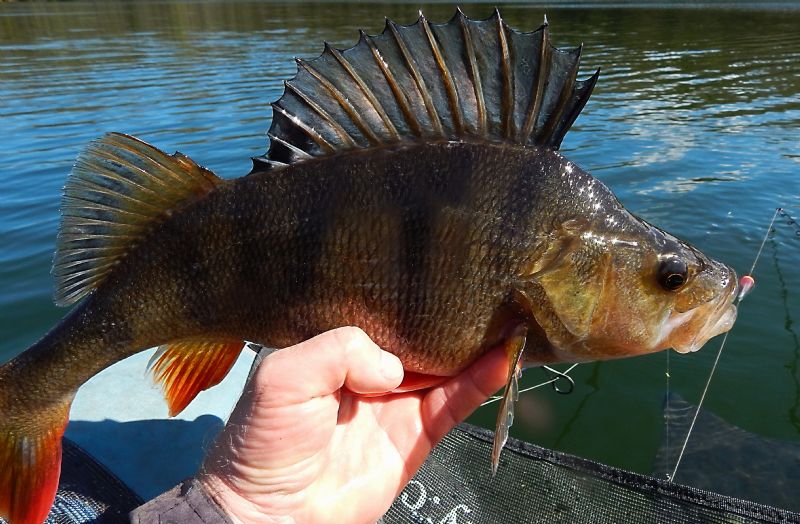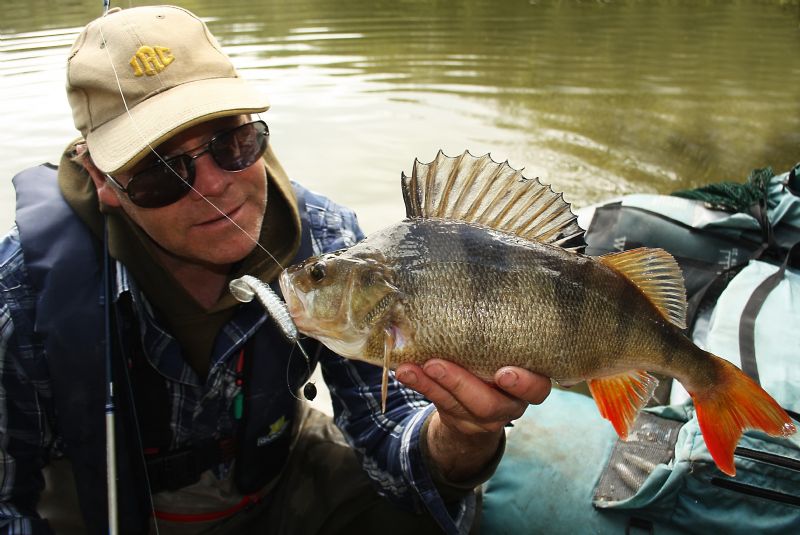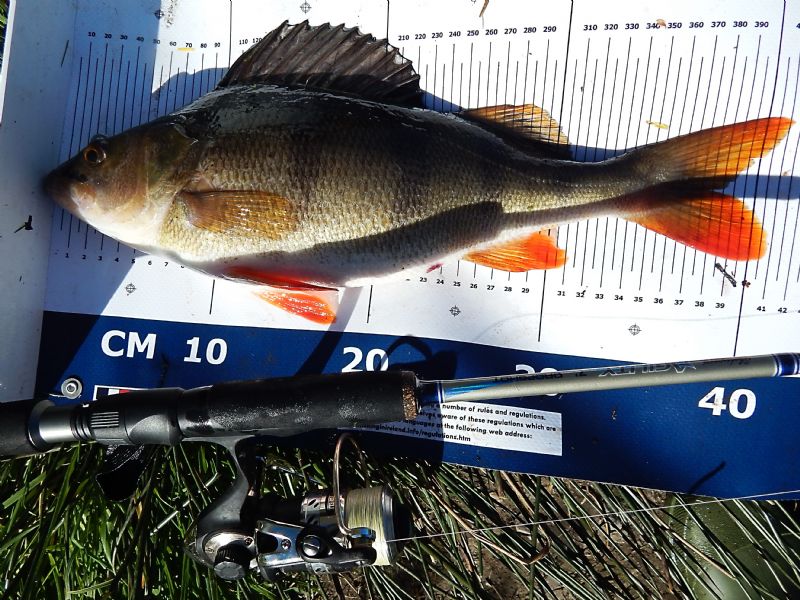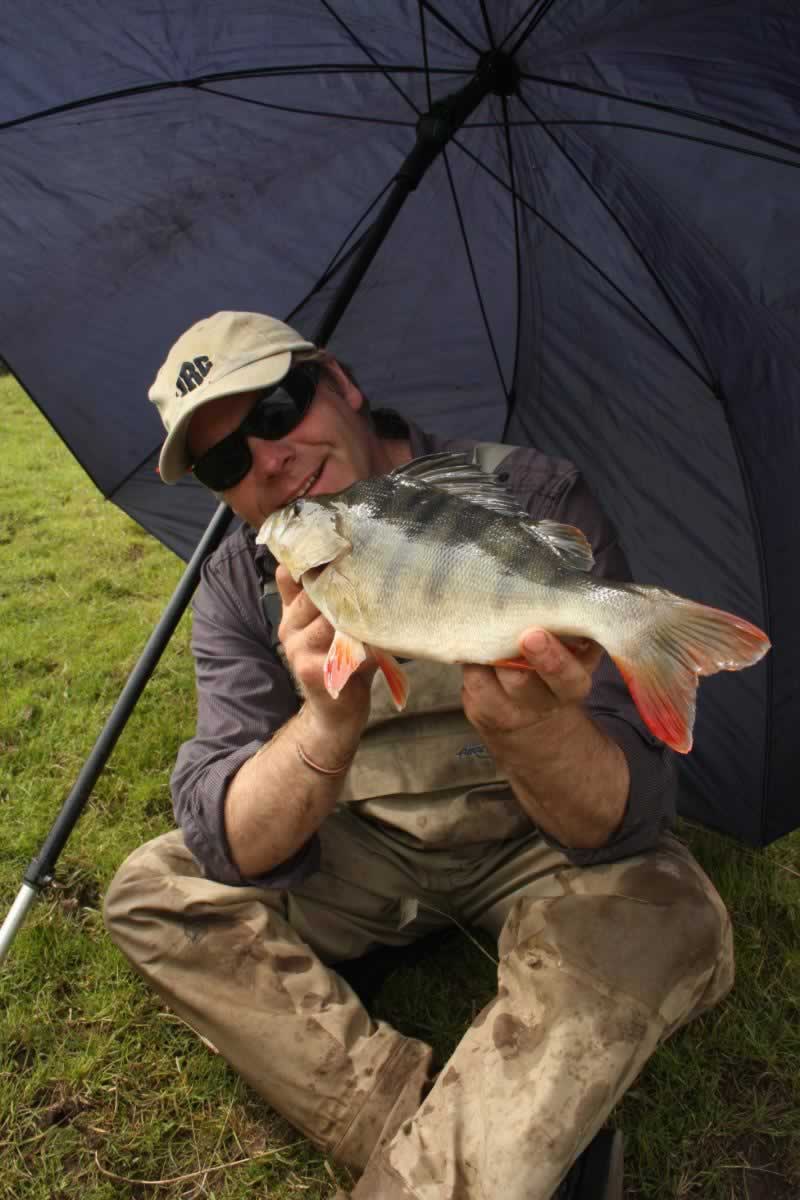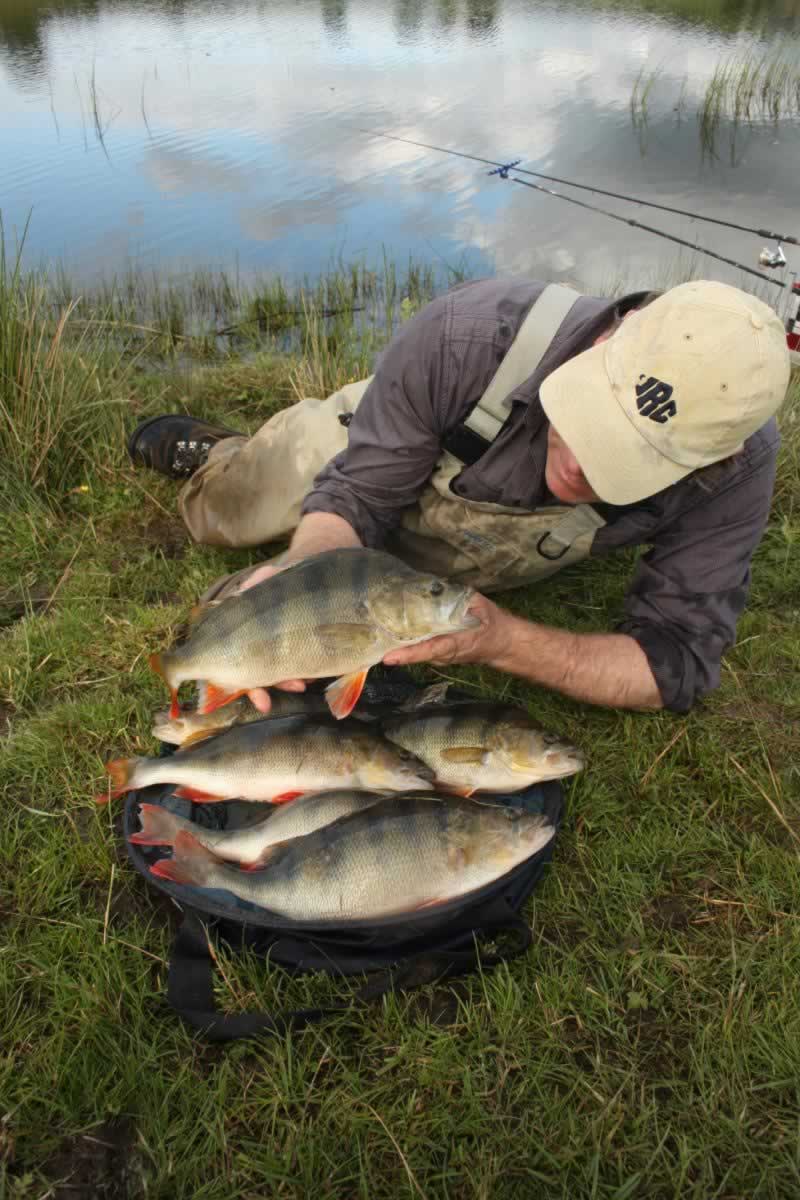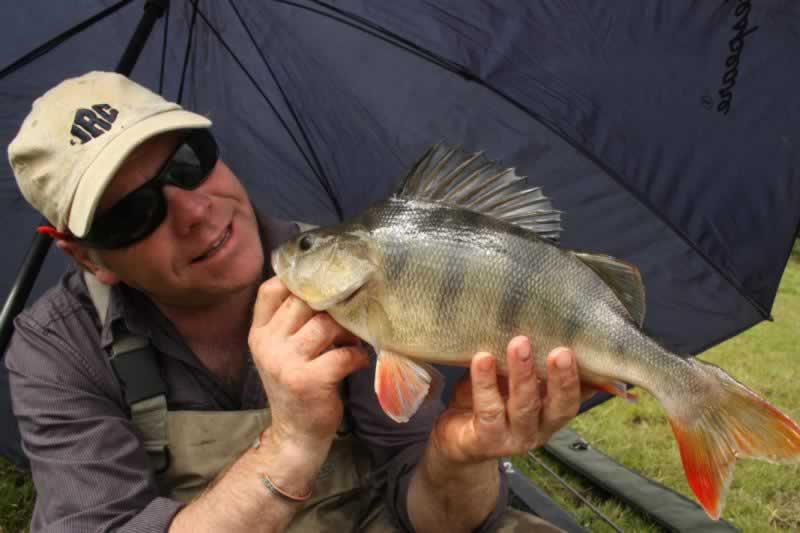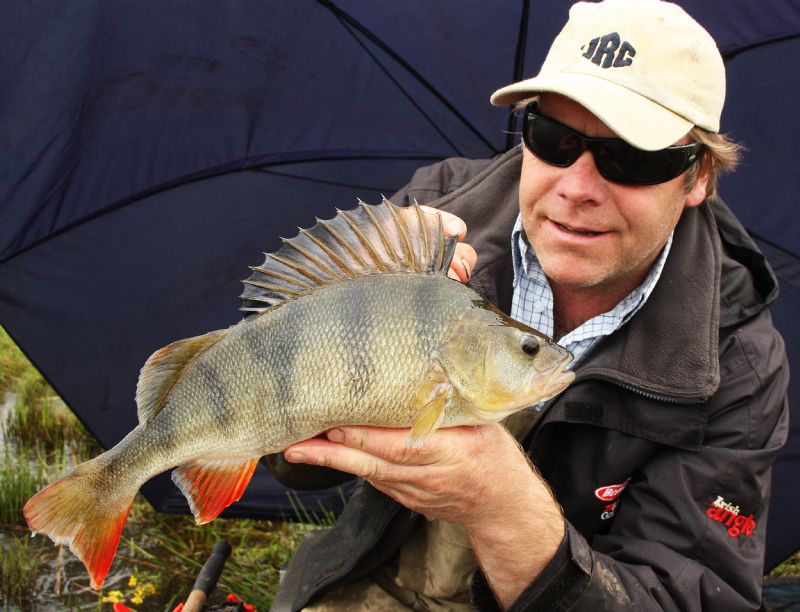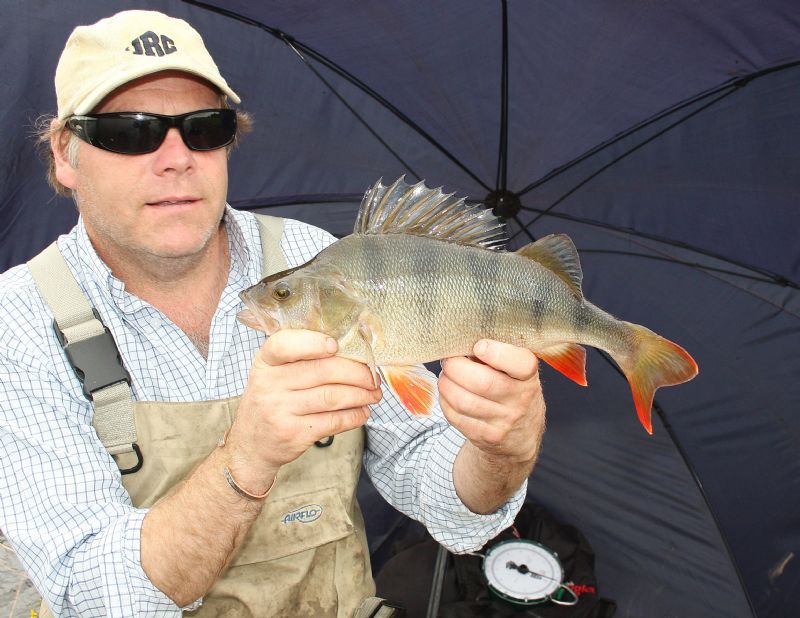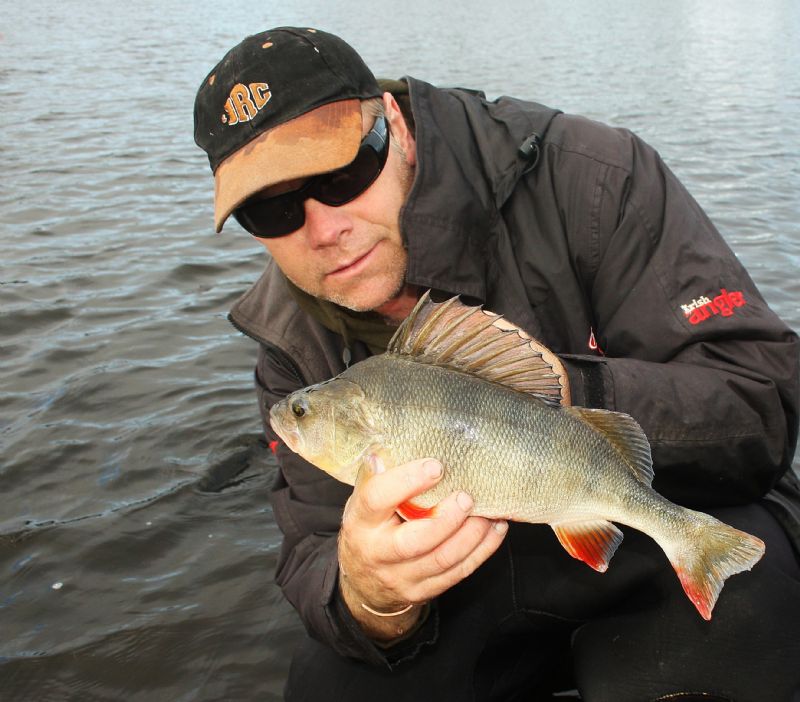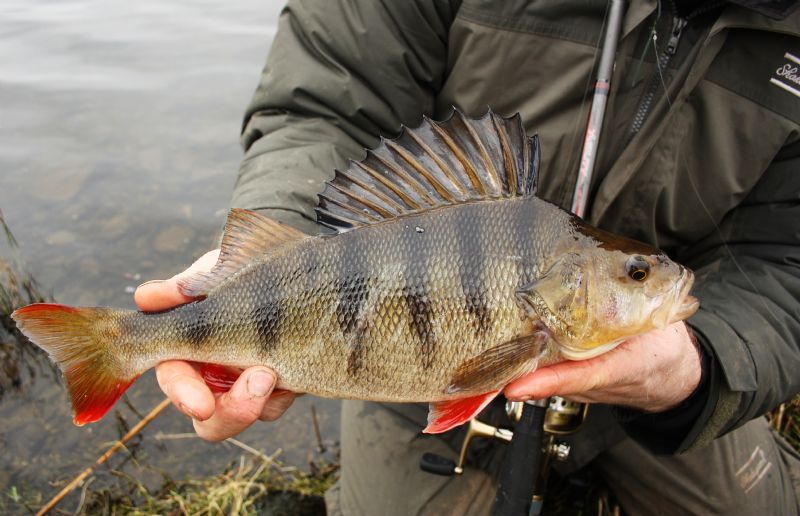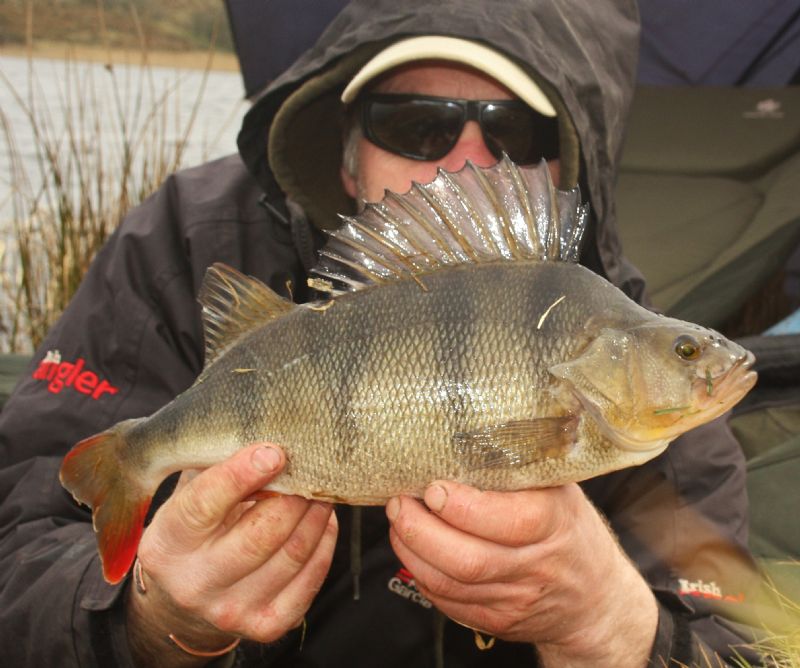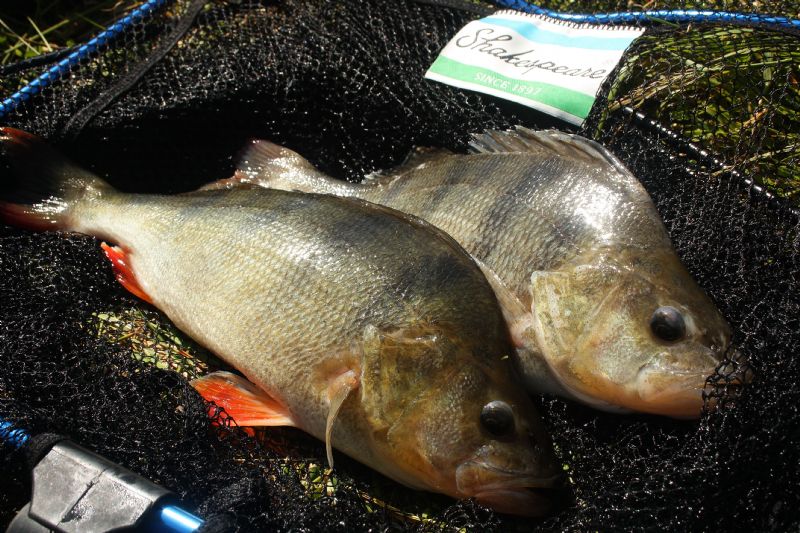Perch
Perch (Perca fluviatilis)
Irish Record 5lb 8oz taken in 1946 by S.Drum, at Lough Erne.
Specimen 2.646lbs or 1.2 kilo, or 40 cm fork length
Identification
A well-known Irish fresh water species, and quite easily identified. The obvious features are the stunning colour variations, with a cream belly leading on to bronze-green flanks and a dark green back. Vivid black stripes run vertically along the body with orange pelvic, anal and tail fins, in various hues and that iconic front dorsal fin. The spines are sharp on the front dorsal, the second dorsal is softer. The body scales are tough and the Perch has excellent eyesight and a cavernous mouth.
Where to catch
Perch can be found in almost every drop of fresh water in Ireland! They are extremely obliging, and more often than not, are the young angler’s first coarse fish encounter. During the late eighties, a Perch disease introduced through infected keep-nets, along with commercial netting drastically reduced our stocks on the Erne and the Lough Neagh system, but slowly and surely, they seem to be making a healthy return.
The River Barrow still produces the occasional good fish, but the Erne, Lough Mask and Lough Corrib are beginning to feature now with larger specimens showing. The River Quoile in Downpatrick has a great head of Perch, with some fine fish among them. Really, it is a case of getting out there and trying the secluded waters and river stretches, there is a “lunker” hiding in most of them.
When to catch
Perch are taken all year through, but larger specimens tend to show early in the season and again towards the tail end of the season. This is due to anglers being able to locate mature female fish prior to spawning before March-April, and again, larger adult fish on the feed coming up to the barren winter months.
Bait
With increased popularity in “drop-shotting” and “vertical jigging”, a method of jigging small latex lures simulating wounded fish, greater numbers of Perch captures are being reported. This is a fabulous way of targeting the larger predators, as you are able to travel light and fish on the move, covering larger areas. (It is also a fantastic way to target Pike).
Failing that, traditional use of float fished or ledgered lobworms, maggots, spinning with lures and plugs or small Rudd or Gudgeon dead-baits are all equally devastating.
Methods
As previously mentioned, “drop-shotting” is amazingly effective, and extremely enjoyable. There are a multitude of lures and tackle available and comes well recommended. Standard quiver-tipping or float fishing will pick up large numbers of Perch on the right venues, but it tends to be a numbers game if you are looking for a specimen fish. It is better to move away from the large Perch shoals containing 4-8 ounce fish and look for the smaller packs of mature adults. These are more likely to be picked up through drop-shotting constantly on the move, dead-baiting or fishing a large lobworm over a pre-baited area. Pre-baiting will certainly benefit the cause, especially with a large amount of chopped worm and caster in the feed.
Articles
http://www.angling-ireland.com/in_search_of_large_perch_2016
http://www.angling-ireland.com/large_irish_perch
http://www.angling-ireland.com/the_hunt_for_large_perch
http://www.angling-ireland.com/shakespeare_agility_drop_shot_rod




